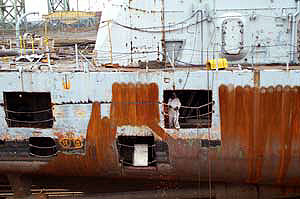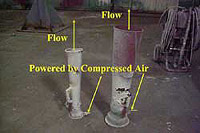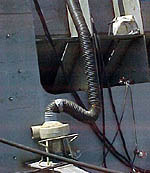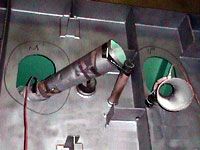Shipyard Employment eTool
Initial Entry Testing >> Ventilation

Ventilation is the primary control for most hazardous atmospheres. For a confined or enclosed space to be considered "Safe for Workers" you must:
- Maintain oxygen content between 19.5 and 22 percent [29 CFR 1915.12(a)(3)],
- Maintain atmospheres in spaces where flammable vapors or gases may be present below 10 percent of the LEL [29 CFR 1915.12(b)], and
- Maintain air concentrations of potentially toxic materials below the PEL or IDLH levels [29 CFR 1915.12(c)].
Ventilation may be provided by:
Some operations, such as hot work, have specific ventilation requirements.

Dilution Ventilation can be used to reduce concentrations of flammable and toxic fumes, vapors, or particulates. Additionally, acceptable oxygen content can be achieved and maintained by introducing outside air.
The following are examples of dilution methods:
- Air movers powered by compressed air
- Electric fans and blowers
- Natural ventilation

Exhaust ventilation can be used to remove flammable and toxic fumes, vapors, and particulates from confined spaces.
Mechanical ventilation equipment that is used in potentially flammable atmospheres must be rated as explosion-proof by Nationally Recognized Testing Labs (NRTL).
Make sure that supplied air is from a clean source and that the hazardous atmosphere is exhausted to safe areas. Keep the ducts as short and straight as possible for more efficient air movement.
The following are examples of exhaust ventilation equipment:
- Electric ducted fans and blowers
- Electric non-ducted fans and blowers
- Air ejector operated by compressed air




